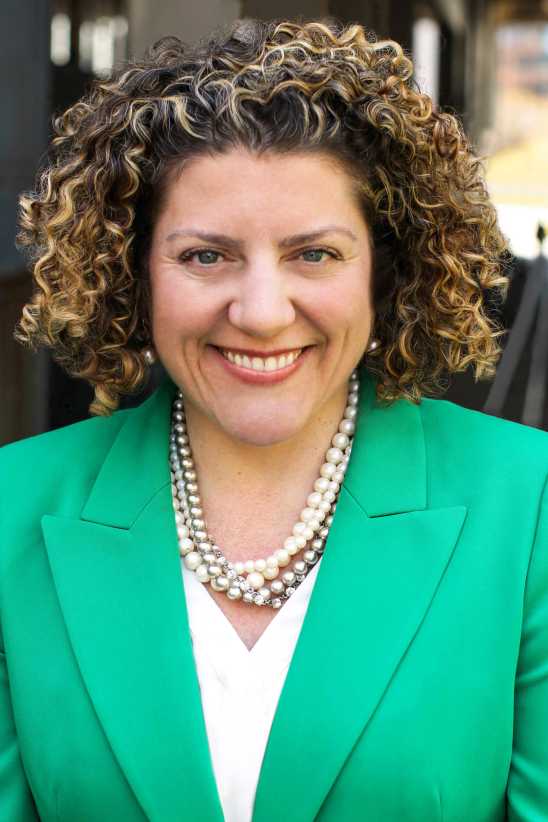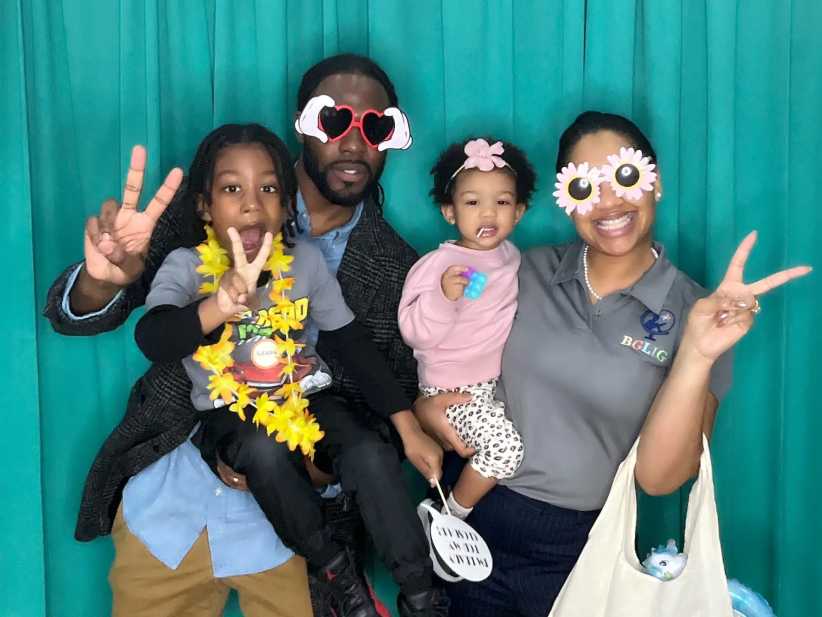Coming to terms with having a special-needs child is a deeply personal process. Whether the issue is congenital or identified later on, the first few years after a delay or diagnosis is identified are, naturally, a period of adjustment. One important way that families regain their balance is by accessing Early Intervention, the federally funded program for children up to age 3 with developmental delays. It provides intensive support at a moment when a huge amount of progress can happen in a very short timeframe.
Of course, many children continue to need services after we light three candles on a cupcake. The gap between Early Intervention and when school-age special education services begin in kindergarten is filled by the Committee on Preschool Special Education, the state and locally funded program administered by the city’s Department of Education that serves children ages 3 to 5.
This can be a huge, imposing bureaucracy. But even if you are on the fence about whether your child will need special education services in the long-term, the preschool years are still part of that critical developmental window in which intensive interventions can often have transformative outcomes. In general, children who receive intensive services early in life are more able to thrive in less restrictive environments.
Even with all the evidence supporting the efficacy of preschool special education, some parents are understandably worried about their children being labeled. We are often asked if being a “preschool student with a disability” in Committee on Preschool Special Education will hurt a child’s chances of getting into a particular school or program later. Unlike Early Intervention, in which a child’s records are treated as confidential health documents, classification as a “preschooler with a disability” in these district committees is part of a child’s educational record, so it’s not a baseless concern.
However, our steadfast answer, again and again, is to give your child his best chance by being proactive in addressing his needs early. No one can guarantee you that an ignorant person won’t discriminate against your child someday. However, experienced professionals who work in education understand that children — especially very young children — reach developmental milestones at different paces and that students with disabilities are also capable learners with the right support. Admissions offices may actually have greater hesitation about an application in which a child appears to have not gotten the help she needs.
Furthermore, there is a slow but growing drumbeat towards recognizing disability as a valuable component of integrating educational environments. Expect to hear the words “diversity” and “inclusion” more and more as they are applied to disability in mainstream educational settings.
Referral and evaluations
A student receiving Early Intervention services will automatically be referred to the committee unless you withhold your consent. Around the time your child turns 2 and a half, the committee should contact you directly. If your child isn’t receiving Early Intervention services, you make the referral to the committee by writing to it directly.
Before your Individualized Education Program meeting, the committee administrator will need to ensure your child has an updated social history, a psychological evaluation, an educational evaluation, and whatever other evaluations (i.e. speech, occupational therapy, physical therapy, and assistive technology) are appropriate. Depending on how long ago any evaluations for Early Intervention were done, the committee may choose to use some or all them. If you feel that these evaluations no longer accurately represent your child, you may request new evaluations.
The committee will provide you with a list of evaluation sites, but it is up to a parent to pick an agency and schedule the appointment. Some highly regarded agencies that do these evaluations have wait lists, so if you have a particular agency in mind to use, it’s best to call early. The quality of these initial evaluations does matter because they are used to determine your child’s eligibility for a Committee on Preschool Special Education and what kind of program and services he receives. If you disagree with the results, you have the right to request an independent evaluation by someone not employed by the city. You may also want to consult with a developmental pediatrician or another specialist. Letters from current teachers and providers are also considered by the committee.
In the months leading up to your Individualized Education Program meeting, it’s a good idea to review your child’s current Early Intervention program with his service providers. If you aren’t sure your child is receiving enough support in the current program, addressing this before your Individualized Education Program meeting will help ensure that the committee administrator has a more accurate sense of your child’s current needs.
The Individualized Education Program meeting
No more than 45 school days from an Early Intervention referral (or 30 school days from a parent signing a consent to evaluation form), the committee will hold a meeting with you. At the meeting, you can expect to see the administrator and someone representing the evaluating agency whose job it is to explain the evaluators’ reports.
You can bring anyone you like to your meeting, and it’s generally a good idea to have someone with you who can take notes so that you can focus on the discussion at hand. Sometimes parents choose to bring a clinician or therapist currently working with their child to attend. You also have the right to bring a lawyer or advocate.
The first agenda item at that meeting will be to determine eligibility. You will go over the evaluations, often in excruciating detail. A child is eligible for special education when he has a 12-month delay in one or more functional areas, or a 33 percent delay in one functional area, or a 25 percent delay in more than two functional areas.
Once a child is found eligible, the second agenda item will be to determine when your child is transitioning from Early Intervention to special education. Children who turn 3 between Jan. 1 and June 30 are eligible for preschool services starting on Jan. 2 of the year they turn 3, while children born between July 1 and Dec. 31 are first eligible on July 1 of that year. To avoid a gap in services following the end of Early Intervention, the special education meeting must happen before the child’s third birthday.
To make matters more complicated, parents with a child in Early Intervention face an important choice at their special education meeting. A child who turns 3 between Jan. 1 and Aug. 31 doesn’t have to begin special education until September if the parent would rather they stay in Early Intervention. Likewise, a child who turns 3 between Sept. 1 and Dec. 31 can delay his transition until Jan. 2 of the following year. This is up to the parents entirely.
Some parents prefer to keep their children in Early Intervention longer to maintain a larger mandate of services or to avoid switching providers. Others are eager to make the switch to make sure their child gets a particular preschool spot. Children who are eligible for a preschool program but cannot be placed in one due to a lack of available seats are generally given a “partial services” placement of Special Education Itinerant Teacher hours until a seat can be found. This is similar to the kind of special instruction children receive in Early Intervention.
Keep in mind that the committee grants 12-month programs only to children it determines are at risk of regression. If your child transitions from Early Intervention to special education on July 1 and is provided a 10-month program and not a 12-month program, he will not receive services in the summer months.
Whatever your particular situation, if you do decide to extend your child’s time in Early Intervention, your Individualized Education Program meeting will end with the preparation of a draft program document. You will reconvene closer to the actual transition date to finalize it and decide on a placement.
Writing the Individualized Education Program
The next step is to decide what kind of program your child will receive. This is different than asking “What school will my child attend?” (The choice of school or center at which a child receives services is known as placement and comes after the program is determined.)
For related services, the committee can consider a wide range of services including, but not limited to, speech-language pathology, occupational therapy, physical therapy, orientation and mobility services, assistive technology, interpreting service, as well as parent education and training. Students can also receive a range of diagnostic and supportive health services that includes audiology, psychological services, school social work and counseling services, and appropriate access to recreation.
The three kinds of instructional programs that can be considered by the committee are a special class in an integrated setting, a special (“self-contained”) class, or a special education teacher. The first two programs are generally found in center-based preschool settings where students receive all their services (including related services) on-site. Children receive busing to these schools to ensure that they are attending the school that is the most appropriate, not necessarily the closest to their home (although distance from home is considered). These schools typically have classes of six, eight, or 12 children. Some are “self-contained,” meaning they only have students with Individualized Education Programs and others run on an inclusion or “integrated” model, meaning that they have a mix of special education and general education students. Schools usually address specific student profiles.
The third option, a special education teacher program, is usually provided as support in a mainstream school or in the home setting. It is possible that a special instructor your child is using in Early Intervention can continue to work with your child, but not all special instructors in Early Intervention are licensed to do so.
Many parents, particularly parents of children with autism, want to know how they can get Applied Behavioral Analysis as part of their special education program. The short answer is that the committee won’t consider “methodology” as part of its program and placement deliberations. But that doesn’t mean that you, the parent, cannot seek out a placement in a school that uses these methods or choose a teacher that is qualified in it.
The final part of the meeting is writing the goals. These are affirmatively stated educational goals that are often drafted by your child’s current Early Intervention providers or suggested by the evaluators. Goals include measures for how to assess progress.
If at the end of your meeting you don’t agree with the document, you do not have to sign it. It is probably a good idea to consult with an educational advocate or an attorney if you think you may end up in a disagreement with the committee as the next step involves appealing your disagreement at an impartial hearing.
Advocating for your child
It is only natural for parents to brag about all the incredible things their children can do, and it is understandably painful to focus on a child’s deficits. But the Individualized Education Program meeting is not the place to boast about your child’s victories or overstate his skills. Save your anecdotes about what makes your child wonderful for your mother-in-law. Instead, steel yourself to reveal and foreground your child’s weaknesses and deficits. This is the place to talk about regressions, safety concerns, and the other things that keep you up at night.
Another thing to keep in mind is that the committee follows an educational model, not a medical model like Early Intervention. It does not have to consider what might be good for your child’s development or the program or placement that is best. It only has to consider what is appropriate, and what setting is least restrictive, which means, generally, what minimum supports your child needs in order to make educational progress. Your parental instincts are honed to seek out what is in the best interests of your child; but when you are dealing with the committee, you need to use its language.
Finally, be an educated consumer. Do your homework and tour every school that is suggested to you by the committee, other parents, and your child’s service providers. Apply to the schools you like as early as possible. It’s important that you go into your Individualized Education Program meeting with a clear plan in mind of what you want. Do not be shy about telling the administrator what you think and referring to the evidence that supports your claims. Also, try to keep an open mind to what the committee suggests. There are many very good administrators who care deeply about children and want to help you find your path. But if you find yourself at loggerheads, call a special education attorney or advocate for help.
Lara Damashek has been an attorney with The Law Offices of Regina Skyer & Associates, LLP since 2006. She has expertise in preschool pendency and in the kindergarten transition process. Before attending Cardozo Law School, she worked as a general education teacher in a New York City public school.
For a child turning 3…Eligible for special education on…Option to extend Early Intervention until…Jan. 1 – June 30Jan. 2Sept. 1July 1 – Aug. 31July 1Sept. 1Sept. 1 – Dec. 31July 1Jan. 2
(following year)





























